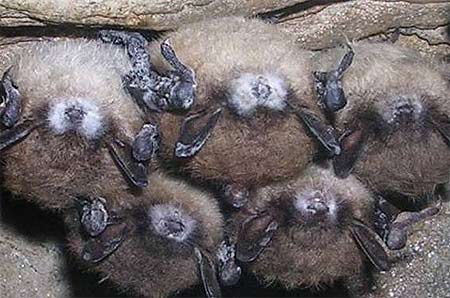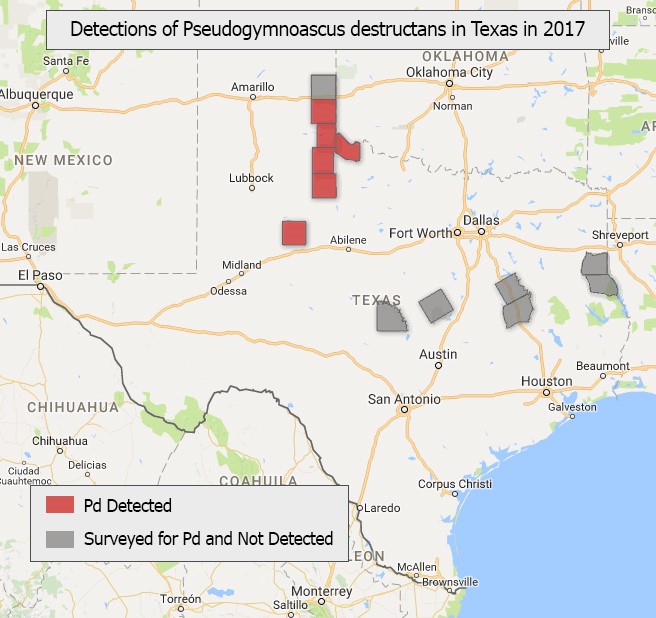How a Fungus May Spread Among Bats
Thursday, May 4th, 2017This is Passport to Texas
Texas has the highest diversity of bats in the nation: 33 documented species in 4 families.
And [Texas] is where a lot of eastern and western bats comingle.
That’s a problem, says mammologist Jonah Evans, now that the fungus that causes the bat killing disease White Nose Syndrome was discovered this year in six Panhandle counties.
The other big concern is our Mexican Free-tailed bats, because they migrate and do not hibernate, they are not expected to suffer the same level of catastrophic impacts from the fungus. However, because they don’t die when they are exposed to the fungus—potentially—that would make them even better at spreading it. It is sort of a bat Armageddon situation.
Mexican Free-tail bats migrate in huge numbers across the Americas, creating concern they may spread the fungus.
When really susceptible species get the fungus, usually about 80 percent of the mortality happens in the first year that the disease turns up. What that tells us is that we have to be very proactive on the front end. We have to really start doing something soon. If we wait, we’re going to be trying to treat these stragglers that are left over, and the bulk of the population will be lost.
Researchers continue searching for treatments and cures. Find information about White Nose Syndrome, and decontamination protocol for cavers, on the Texas Parks and Wildlife website.
The Wildlife Restoration program supports our series.
For Texas Parks and Wildlife…I’m Cecilia Nasti.




 Passport to Texas is a
Passport to Texas is a  Passport to Texas is made available by:
Passport to Texas is made available by: